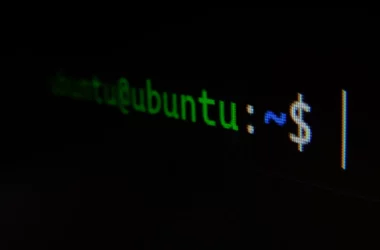Introduction
A Brief Overview of Open Source Licenses
In today’s software-driven world, “Open Source” is a term that gets thrown around quite a bit. Open source software is essentially software for which the original source code is freely available to the public. This enables anyone to inspect, modify, and distribute the software. However, what many don’t realize is that ‘open source’ is not a free-for-all; it’s governed by licenses that dictate how the software can be used, modified, and shared.
Why Understanding Open Source Licenses is Crucial
If you’re a developer or part of a business that interacts with software in any capacity, understanding open source licenses is not just an option—it’s a necessity. Choosing the wrong license can have significant legal implications, potentially affecting how you can monetize or distribute your software. Additionally, using someone else’s open-source code in your project without understanding the attached license could land you in hot water.
What You Can Expect
By the end of this blog post, you’ll gain a comprehensive understanding of what open source licenses are, the types available, and their legal implications. We’ll also dive into best practices for choosing an appropriate license for your project, as well as tips for contributing to open source projects while staying on the right side of legal compliance.
Whether you’re a developer working on a new software project, or a business looking to incorporate open-source elements into your products, this guide is your roadmap to navigating the intricate world of open source licenses.
1: What are Open Source Licenses?
Definition and Role in Software Development
Open source licenses are legal contracts that determine how a piece of software can be used, modified, and distributed. In essence, they serve as the rulebook that outlines the terms and conditions under which open-source software is made available. Contrary to popular belief, “open source” does not mean “free to use however you want.” While the code is often freely accessible, the license attached to it will define what you can and cannot do with that code. For example, some licenses may require any changes to be made public, or for the original code to be attributed in any derivative works.
The role of these licenses in software development is monumental. They act as mediators between the creator and the user, defining the scope and limitations of code usage. This makes it crucial for developers to choose the appropriate license for their software projects. The chosen license can affect how the project evolves, who contributes to it, and even how it’s monetized.
Importance in the Open Source Community
In the open-source community, licenses are the backbone that allows for collaborative development while still protecting the intellectual property rights of the original creator. Without licenses, the whole ecosystem would be a wild west of code usage, leading to potential legal battles and stifling innovation.
The licenses encourage sharing and collective enhancement by setting ground rules everyone agrees upon. They maintain the integrity of projects by ensuring that contributors are aware of their responsibilities, and they foster an environment where both individual programmers and large corporations can co-exist and collaborate. Therefore, understanding the nuances of different open source licenses is like learning the language of a community you wish to be a part of—it’s essential for meaningful and respectful engagement.
2: Types of Open Source Licenses
Navigating the world of open source licenses can initially feel like wandering through a maze. There are several types to choose from, each with its own set of conditions and implications. In this section, we will explore some of the most commonly used open source licenses to give you a clearer picture of your options.
MIT License
The MIT License is one of the most permissive open source licenses. It allows you to do almost anything you want with the project, provided that you include the original copyright and license notice in any copy or significant portion of the code. This makes it a popular choice for developers who want to maximize the reach and impact of their code while keeping things simple.
Key Features:
- Freedom to use, modify, and distribute
- Requires inclusion of the original copyright and license notice
GPL (GNU General Public License)
The GPL, or GNU General Public License, is a more restrictive type of license that aims to guarantee that the software remains free and open. If you distribute your project under GPL, anyone who distributes your code (or a derivative work) must make the source code available under the same license terms. This is known as “copyleft,” a play on the word “copyright.”
Key Features:
- Guarantees software remains free and open
- Requires the same license for derivative works (copyleft)
Apache License
The Apache License is another permissive license but with a key difference: it allows you to include the open source code in proprietary work. It also provides an express grant of patent rights from the contributors to the users. Like the MIT License, it requires the inclusion of the original license and copyright notice when the code is redistributed.
Key Features:
- Permissive, like the MIT license
- Express grant of patent rights
- Allows inclusion in proprietary projects
Other Popular Licenses
There are many other licenses out there tailored to specific needs and philosophies, some of which include:
- LGPL (Lesser General Public License)
- BSD Licenses (Berkeley Software Distribution)
- Mozilla Public License (MPL)
- Creative Commons Licenses
- Eclipse Public License (EPL)
Understanding the types of open source licenses available is a vital step in selecting the appropriate one for your project. Each has its pros and cons, and the right choice depends on your goals, whether it’s wide-reaching dissemination, strict control over derivative works, or something in between. In our upcoming sections, we’ll explore how to make that crucial decision, so stay tuned!
3: How to Choose an Open Source License
Selecting an open source license is not a one-size-fits-all situation. Your choice will have a long-lasting impact on how your project evolves, who can contribute to it, and how it can be used by others. In this section, we’ll delve into the factors to consider when making this important decision, weigh the pros and cons of different license types, and explore scenarios that are best suited for each type.
Factors to Consider
When deciding on an open source license, you should ask yourself a few critical questions:
- Project Goals: What do you want to achieve with this project? Is it a community project or a corporate one?
- Community Engagement: How do you envision other developers interacting with your project?
- Monetization: Do you plan to make money directly from the project, or is it a stepping stone for something else?
- Legal Protection: How important are matters like patent protection or liability disclaimers to you?
Pros and Cons of Different Types
MIT License
Pros:
- Maximum freedom and flexibility
- Easy to understand and implement
- Widely used and recognized
Cons:
- Lack of patent grant
- Less control over derivative works
GPL (GNU General Public License)
Pros:
- Ensures software remains open source (copyleft)
- Strong community engagement
- Includes explicit patent grant
Cons:
- Restrictive; can’t be included in proprietary software
- Complexity can discourage business adoption
Apache License
Pros:
- Permissive
- Includes explicit grant of patent rights
- Allows for sublicensing, enabling inclusion in proprietary projects
Cons:
- Requires changes to be stated in the redistributed code
- Not as simple as the MIT License
Scenarios Best Suited for Each Type
MIT License
- Ideal for: Simple projects, libraries, or frameworks that seek wide adoption and usage
- Examples: jQuery, .NET Core
GPL (GNU General Public License)
- Ideal for: Community-driven projects that want to ensure the software remains free and open
- Examples: GNU/Linux, WordPress
Apache License
- Ideal for: Corporate projects, or any situation that requires a balance between openness and legal protection
- Examples: Apache HTTP Server, Kubernetes
Choosing the right license can feel overwhelming, but the reality is that your choice can be guided by your project’s goals and the kind of community you wish to cultivate. Whether you go for the freedom of MIT, the openness of GPL, or the balanced approach of Apache, remember that your license will set the tone for your project’s future. So choose wisely.
4: Legal Implications of Open Source Licensing
Open source licensing isn’t just a matter of project guidelines or community norms; it’s also a legal framework that comes with its own set of implications. Failing to understand or comply with these can result in legal consequences. In this section, we will delve into the intellectual property rights associated with open source licensing, legal compliance and obligations, and what happens when you violate the terms of an open source license.
Intellectual Property Rights
Intellectual property (IP) refers to creations of the mind, such as inventions, designs, and artistic work, among others. In the context of software development, the code you write is your intellectual property. Open source licenses help define the terms under which this property can be shared, used, and modified by others.
Depending on the license, you may retain full IP rights (as with permissive licenses like MIT), or you may choose to share those rights under certain conditions (as with copyleft licenses like GPL).
Legal Compliance and Obligations
Open source license compliance isn’t optional; it’s a legal necessity. Whether you are using someone else’s open-source code or releasing your project, you must adhere to the license terms. This often means including proper attributions, disclosing source code, or making derivative works available under the same license terms.
Open Source License Compliance Checklist:
- Read the License: This might sound obvious, but it’s often overlooked.
- Consult Legal Counsel: Especially for complex or restrictive licenses.
- Document Compliance: Keep records of the licenses for each part of your project.
- Distribute License Information: Ensure that your project’s distribution includes all the necessary license and copyright notices.
- Review Contributions: Make sure that contributions to your project also comply with the license terms.
What Happens When You Violate License Terms?
Violating the terms of an open source license can result in a range of consequences, from being barred from using the software to facing legal action for damages. In many cases, the project’s maintainers will reach out to request compliance before taking any legal steps, but this is not guaranteed. Legal repercussions can include hefty fines and even criminal charges in extreme cases.
To navigate the world of open source licensing safely, it’s crucial to understand not just the technical implications but the legal ones as well. Being well-informed can save you from potential legal pitfalls and allow you to make the most of the open-source community’s collaborative spirit. So, read carefully, choose wisely, and when in doubt, seek legal counsel.
5: Contributing to Open Source Projects
So you’re interested in contributing to open source projects—excellent! Whether you’re a first-timer or a seasoned developer, contributing to open-source projects is a rewarding way to learn, grow, and collaborate with other like-minded individuals. However, before you jump in and start contributing, there are certain precautions to take and compliance factors to consider. Let’s explore these in detail.
Precautions to Take Before Contributing
Before you start contributing code, designs, or even documentation to an open source project, it’s essential to do your homework:
- Understand the Project’s License: Knowing the license will help you understand what you can and cannot do.
- Read the Contribution Guidelines: Many projects have a set of rules and guidelines for contributions.
- Familiarize Yourself with the Codebase: The more you understand the project, the more meaningful your contributions will be.
- Start Small: Especially if you’re new to the project, consider starting with small “good first issues” to get your feet wet.
- Communicate: Always make an effort to communicate with existing contributors or maintainers to understand the project’s needs and priorities.
Ensuring License Compliance When Contributing or Forking a Project
Even when contributing to someone else’s project, you must ensure that you’re in full compliance with the project’s license. The same goes for forking a project to create a derivative work. Here are some key steps:
- Attribution: Always provide proper attribution if you are reusing code from the project.
- License Consistency: If the project you’re contributing to has a GPL license, for instance, any code you contribute should be compatible with the GPL.
- Transparency: Be clear about what changes you’ve made when you’re contributing to a project.
- Legal Review: For large or significant contributions, consider getting a legal review to ensure full compliance.
Contributing to open-source projects is a fulfilling experience but should be approached with a thorough understanding of the associated license requirements. By taking the proper precautions and ensuring you’re in compliance with the project’s license, you set the stage for a positive and mutually beneficial relationship with the open-source community. So go ahead—contribute responsibly and make the most of the open source world.
6: Proprietary vs Open Source Licenses
The debate between proprietary and open source licenses is one that has fueled many discussions in the tech world. Both have their merits and drawbacks, and the choice between the two often depends on a project’s specific needs and goals. In this section, we’ll explore the core differences between these two types of licenses, as well as the advantages and disadvantages of each.
Core Differences
Proprietary Licenses
- Ownership: The software remains the property of the original author or organization.
- Usage: Use of the software is usually restricted to those who have purchased it or are using it under a specific license.
- Modification: The source code is not available, meaning you cannot modify the software.
Open Source Licenses
- Ownership: The software is often owned by a community or is in the public domain.
- Usage: Use of the software is usually free and can be modified or distributed under the terms of the license.
- Modification: The source code is available, and you are free to modify it under the terms of the license.
Advantages and Disadvantages
Advantages of Proprietary Licenses
- Quality Control: Because the original authors maintain control, they can ensure a certain level of quality and support.
- Monetization: Easier to monetize as users typically pay to use the software.
- Commercial Support: Often comes with professional support and regular updates.
Disadvantages of Proprietary Licenses
- Cost: Usually expensive to purchase or license.
- Flexibility: Lack of access to the source code means you can’t customize the software.
- Vendor Lock-in: You are dependent on the original vendor for updates and support.
Advantages of Open Source Licenses
- Cost: Usually free to use, modify, and distribute.
- Community Support: A large community often supports open source projects.
- Flexibility: Access to the source code allows for customization and adaptation.
Disadvantages of Open Source Licenses
- Complexity: Some open source licenses are complicated and require legal expertise to navigate.
- Quality: The quality can vary, and there may not be any professional support.
- Monetization: More challenging to monetize directly, especially for smaller projects.
Whether you opt for a proprietary or an open source license often depends on what you aim to achieve with your project. Proprietary licenses may offer more control and easier monetization, but they come with a cost and lack of flexibility. Open source licenses offer more freedom but can be complex and may not provide a straightforward path to monetization. Choose the one that aligns with your project’s needs, and as always, consult legal advice when in doubt.
7: Best Practices for Open Source Licensing
Navigating the complex landscape of open source licensing can be challenging, but there are best practices that can help you steer clear of legal troubles and maintain a healthy relationship with the open-source community. Whether you’re an individual developer or part of a larger organization, following these recommendations can help you manage open source licenses more effectively.
Recommendations for Individual Developers
- Educate Yourself: The first step in effective license management is understanding the types and implications of various licenses. Don’t just skim through; take the time to read and understand them.
- Choose Wisely: When starting a new project, carefully select an open-source license that aligns with your goals for the project.
- Consult the Community: If you’re unsure, consult the developer community or seek legal advice to make an informed decision.
- Document Everything: Keep meticulous records of all the open-source software you use, complete with license types and any modifications you’ve made.
- Contribute Back: If you modify open source code, consider contributing your changes back to the community, but ensure that you adhere to the project’s license terms when doing so.
Recommendations for Organizations
- Legal Consultation: Organizations should always consult with legal experts to understand the nuances and responsibilities of using open source licenses.
- Internal Policy: Develop an internal policy and guidelines around open source license compliance.
- License Auditing: Perform regular audits to ensure that all used and distributed open source software complies with their licenses.
- Employee Training: Educate employees about the importance of license compliance and the basics of open source licensing.
- Automate Where Possible: Use software tools that can automatically track and manage licenses in your projects.
Open Source License Compliance Checklist
- Review License Terms: Always start by reading and understanding the license terms.
- Track Usage: Keep a list of all open-source software and licenses used in your project.
- Maintain Attribution: Always maintain correct attribution notices as required by the license.
- Distribute License: If you redistribute the code, make sure to include all license and copyright notices.
- Continuous Monitoring: Regularly update the list and review the licenses for compliance.
Adhering to these best practices can save you a lot of headaches down the line and enable you to reap the benefits of open source software while respecting the legal frameworks that allow it to exist. Keep these guidelines in mind, and you’ll be well on your way to becoming a responsible member of the open-source community.
Conclusion
We’ve traversed the complex landscape of open source licenses, delving into their types, legal implications, and best practices. The journey has been enlightening, highlighting the critical role that these licenses play in the world of software development. From the permissiveness of the MIT License to the stringent community-focused GPL, each license serves a unique purpose and comes with its own set of rules and responsibilities.
Understanding and complying with these licenses is not just a legal necessity but also an ethical obligation for anyone who wishes to be a part of the open-source community. It’s a diligence that could save you from costly legal troubles and reputational damage. Moreover, it fosters a spirit of collaboration and freedom, the cornerstones of open-source development.









